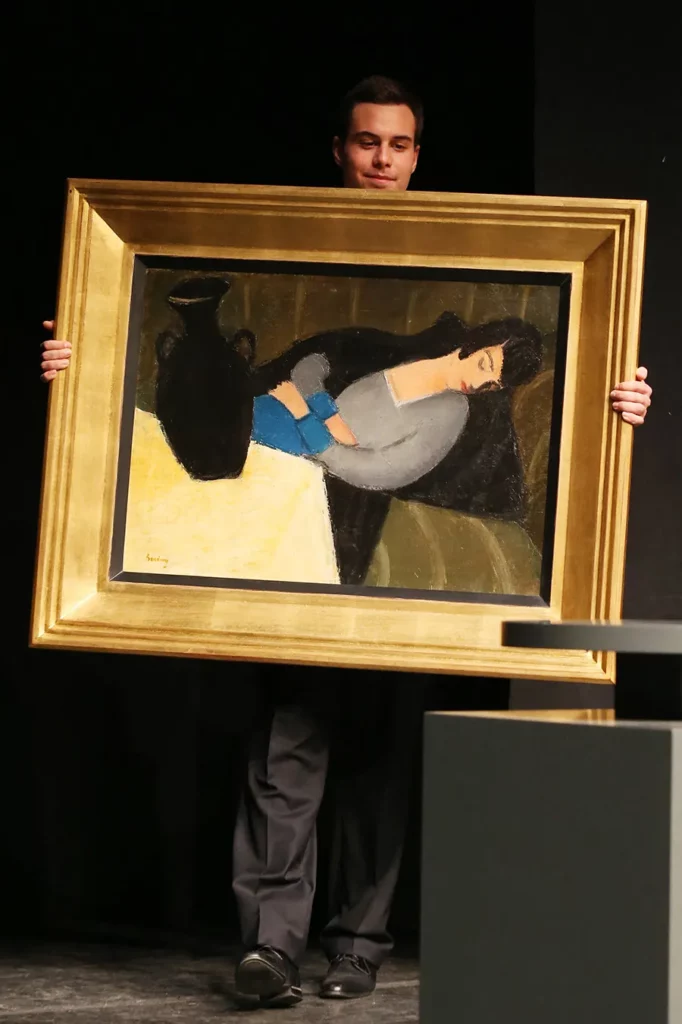In the 1999 classic family movie “Stuart Little,” a middle-class married couple (Gina Davis and Hugh Laurie) adopt a brother for their single child (Jonathan Lipnicki). It is no ordinary boy, though. It is actually a nice, loving, talking mouse that, reverse-ALF style, gets victimized by the family cat and is, at first, rejected by his human brother, only for family values to triumph eventually.
Being who he is – both a mouse, an inconspicuous and unwanted rodent, and an orphan, Stuart is about to blend into an unknown environment of fairly rich people and loving homemakers who, in their New York house, cherish family values, emotional development, love, peace, and art. And the last position on this list – art – is where a bland story has a riveting twist. It involves the international art market and an investigation into a painting masterpiece lost for almost a century.

Long-Sleeping Lady with Black Vase
‘I couldn’t believe my eyes,’ said Gergely Baraki, an art historian with Hungary’s National Gallery in Budapest, after watching “Stuart Little” with his daughter a decade after its release. Quoted by the AFP, he said that as a researcher, he “can never take his eyes off the job, even watching Christmas movies at home.”
But it was not only his readiness to perform job duties in his private time. It also took his incredible visual memory to recognize one specific prop in the movie. A picture on the wall of Littles’ house, a masterpiece of Hungarian modernist Róbert Berény titled Sleeping Lady with Black Vase. The picture was thought to have been lost forever seven decades earlier in the 1920s. The middle-aged Barki could – and did – know it only from a black and white photo from the 1928 exhibition.
There was no chance for the picture to be a reproduction – after all, the long-lost picture was hardly known to Hungarian art historians in Budapest, let alone movie designers in California. The researcher was sure that he had dealt with the original and started his crusade.
Lost and found
Ten years (before Baraki saw the painting) is a lot of time for simple movie props to disappear. Berény’s investigation started with an exchange of emails with Sony Pictures and Columbia, the movie’s producers, and it took two years only to get to talk with the set designer. She said that she bought it for pennies in an antique shop in Pasadena, and after using it as a Littles’ house decoration, she put the piece in a house of her own. Then she sold it to a private collector.
But the thread was not lost, and in 2014 it came to Budapest – but not to the museum. A private collector bought it for a modest USD 285,000 – quite a sum compared to the original USD 40 the movie set designer paid for it at a flea market.
Berény, the avant-garde Hungarian painter, had a history as sophisticated as his work. In 1919 he supported the communist movement and worked for it as a poster designer. After the failure of their revolution, he was forced to flee and found himself in Germany. There, his Lady with the Black Vase was on display at a 1928 exhibition and sold to a collector, possibly Jewish, who later fled German prosecution to the United States.
There are still gaps in the history of a painting that, at some point, was the most widely known Hungarian work of art in the world.







